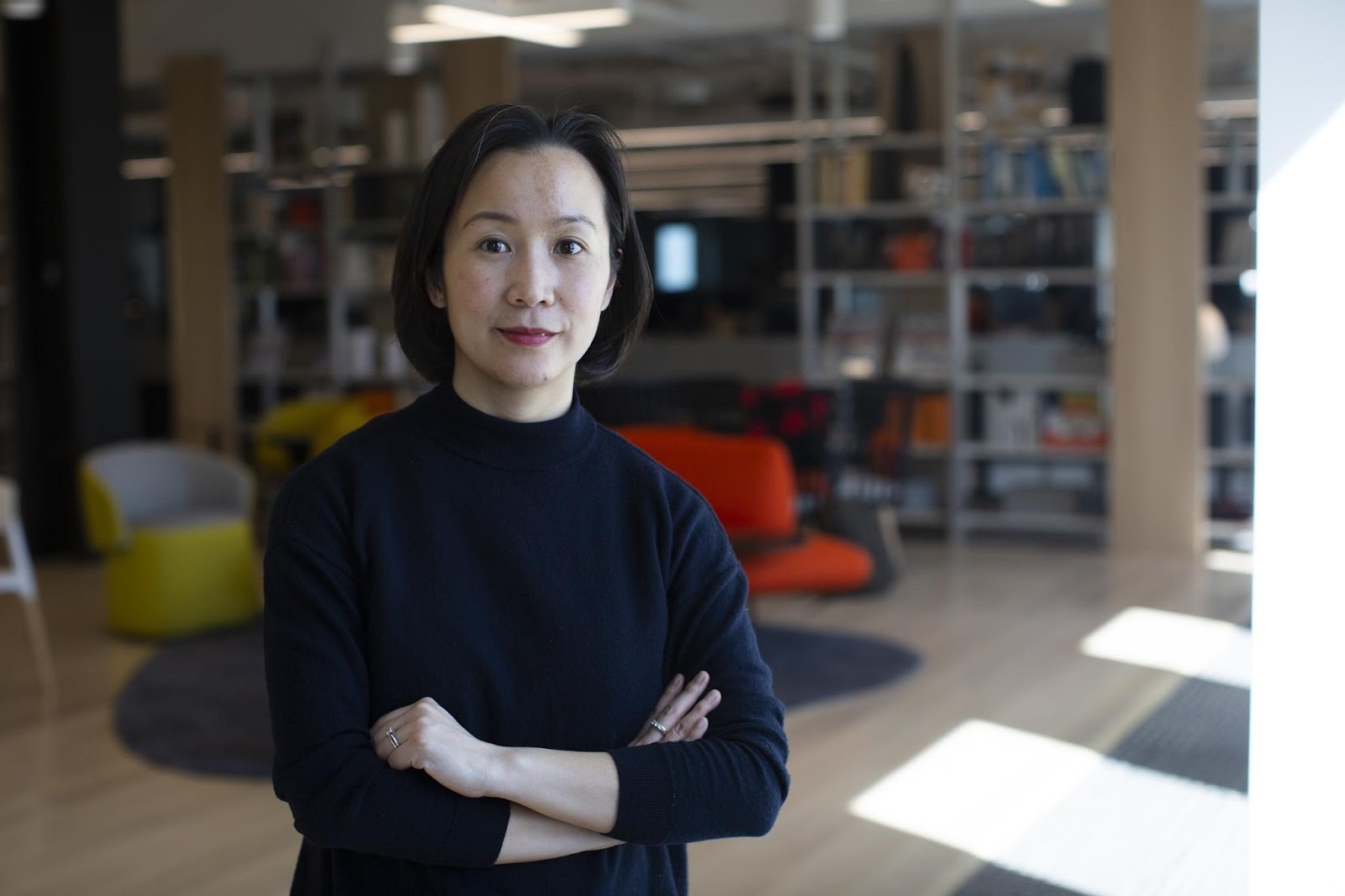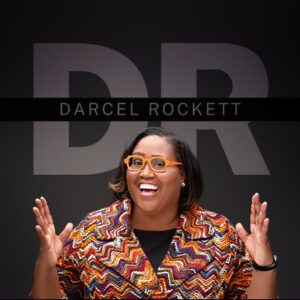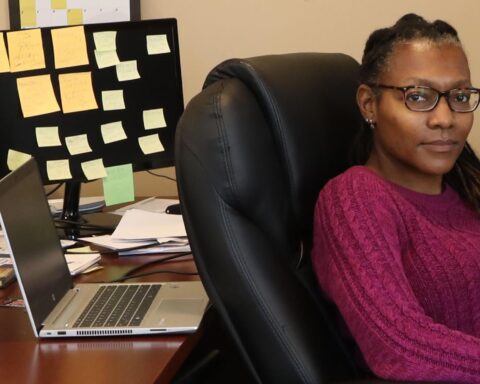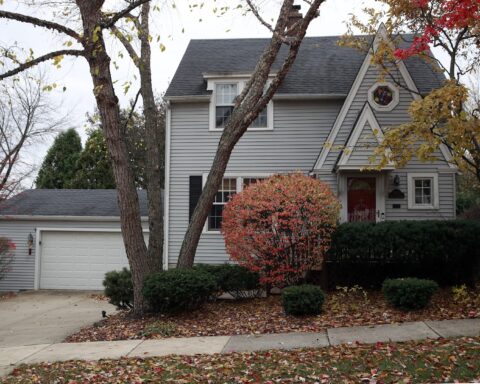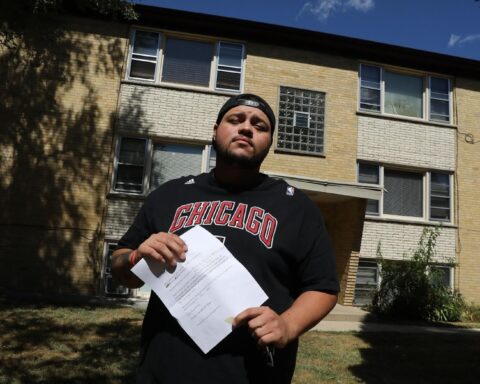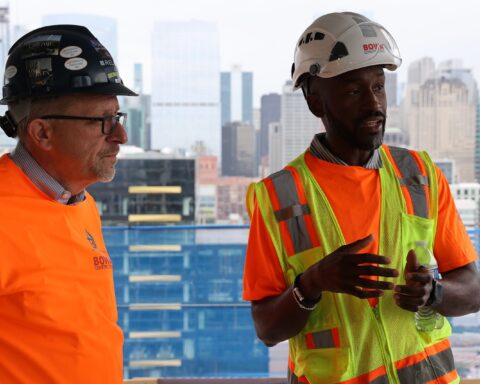Chicago is an architect’s town. Architectural tours are plentiful in the city, showing off its grandeur and history. New projects are always in the mix, be it a renovation, repurposing or new creation. Through it all, women are at the table, designing buildings that will leave their mark on city landscapes and communities.
These days, female architecture students are graduating at the same rate as men, according to the Association of Collegiate Schools of Architecture. So, as we wrap up a tumultuous Women’s History Month, we spoke with women in the profession — who have helped shape the city through work on everything from the Old Main Post Office to the Chicago Riverwalk to O’Hare International Airport — about what the new decade holds for our acclaimed city.
Look to the horizon: The future is female.
The interviews have been condensed and edited.
Chheng Lim, project executive at Sheehan Nagle Hartray Architects, designs public structures like data centers, which house networks and servers. Her niche: What’s known as mission critical architecture, or buildings that are critical to the operation of an organization.
Q: Buildings impact landscapes, regardless of where they are placed. What are conversations like between architects, clients and communities when talking purpose and design?
There’s an opportunity to design thoughtfully. I don’t necessarily think that good architecture has to be something that is overly extravagant or that tries to do too much. Does it consider all of the environmental constraints, and does it negotiate that well? Does it use sustainable materials thoughtfully? It’s all of these thoughtful decisions you make along the way that can really define a building.
Q: Sustainability is a buzzword in many industries, but in the world of architecture, can a project ever perfectly align financially, ecologically and culturally?
Absolutely. Certainly for the clients that I work with, it’s actually very critical. Sustainability, for me, isn’t simply just about the materials; it boils down to the fundamentals of how a building actually works, how the systems are designed. How do you make the building as passive as possible, so you’re not using all this energy.
Kimberly Dowdell is a principal at HOK Chicago. Over the past 25 years, HOK has led projects from large scale planning to urban design, from skyscrapers to sports arenas to office spaces. Currently, Dowdell is looking forward to the expansion of Terminal 5 at O’Hare and to seeing how her team’s work on a Little Village commercial corridor materializes into something transformative for the neighborhood.
Q: With Chicago consisting of 77 unique neighborhoods, how do you strengthen the public experience without traumatizing the residents of the neighborhoods or compromising that identity?
We have to believe in the genius of the local and not have experts from elsewhere always come in and try to save the day. Many of the solutions to the problems that we see in our communities can be solved by the minds and hearts in the community. The largest barriers to improvement, particularly in under-resourced communities, is access to capital. Let the people solve their own problems and give them the loans and other opportunities to take ownership of their own destiny.
Q: What does the notion of “the future is female” look like in your field of work?
While I am proud to be a licensed architect, I more broadly consider myself a change agent in the built environment. I specialize in architecture, sustainable design, organizational leadership, business development, marketing, project management, real estate development and public administration. I think that women have the ability to multitask very well, and I think that the future is going to require more and more of this. Further, I believe that if the built environment is made for all of the people, an increasing share of influencers in the built environment should be women.
We are seeing some progress in exposing more children and young women to architecture, but there is much more work to be done in this space. I’m leading the National Organization of Minority Architects (NOMA), and through NOMA’s Project Pipeline Summer Camps, we reach hundreds of students each year.
Carol Ross Barney is the founder and design principal of Ross Barney Architects. Her award-winning work ranges from the Chicago Riverwalk to the Oklahoma City Federal Building. She’s also a founding member of the nonprofit Chicago Women in Architecture, an organization whose goal is to advance the status of women in architecture and related fields.
Q: Neighborhoods change when structures are erected. When you see Chicago’s neighborhoods — the ones where you’ve worked on previous projects — how do you see them?
A lot of our work is design of infrastructure — transit, parks, schools — so the impact is almost always immediate and substantial. The quality of life in our city depends on the functioning health of the entire infrastructure system. I think this means that the dysfunctioning neighborhoods and urban infrastructure need to be fixed first.
Q: What are the challenges of being a woman in this business?
Architecture is a very challenging and competitive business for any practitioner, but the degree of difficulty is exponentially increased for women who face both the prejudices against women in American society and the still unequal status of women in the architectural profession. You only need to look at the leadership at major firms in Chicago to understand the obstacles that women still face.
Heidi Wang is a partner at Worn Jerabek Wiltse Architects, P.C., a firm that specializes in senior living projects and affordable housing for people with special needs. She once thought she’d go into historic preservation, but after grad school at University of Illinois at Chicago, the built environment became her focus.
Q: Why does there seem to be a disconnect between architects being called upon by average single-family homeowners?
I think there’s a perception that architects are only for really high-end projects or for the super-rich to design a custom mansion on a cliff somewhere, when really the everyday person can most benefit from architect services. We’re not an elite service; we’re there to help you make a better home or to maximize what you have. Maybe you have your mother come live with you. How do you adapt your home to make it accessible to her or have two households co-existing in one — that’s something where an architect can help with that and really make a difference.
Q: Are you a firm believer in reactivating buildings and repurposing them?
Definitely, that is something I’m committed to. As a firm, we have a project right now in a rural part of central Illinois converting an original high school into affordable housing apartments for seniors. A lot of times these adaptive projects use a building that is really well situated — so well connected to things like walking to stores, to supportive services. It’s right in the center of town.
Kristen Conry is a co-managing director and principal at Gensler’s Chicago office. A 20-year veteran of the industry, she has served on both sides of the architecture table, as client and service provider. While she initially majored in English in college, she turned to architecture because it was something that she felt had a real balance of art, science, design and process.
Q: Where do you see Chicago’s architecture scene going in this new decade?
At the root, Chicago is a city of innovative solutions. Because we have such a rich history and because we are a city with some really amazing assets, we look at the great stock of amazing buildings and bring them back to the best-in-class examples of what they could be.
I think about the work we’ve done on the Willis Tower with the new introduction of all the amenity spaces. And the work that we’ve done with the Old Post Office — breathing new life into 2.5 million square feet that sat dormant for decades — is such an iconic piece of architecture and so impactful in the city.
Q: How does one make a name for themselves today in a city known for its architecture?
Architecture is not an individualistic pursuit. So making a name or standing out in a city known for its architecture is not the way I think of it. To be at a firm like Gensler, where we design at the highest level for anything from 2.5 million square feet to 1,200 square feet — that’s how you make a mark on the city, by understanding that impact happens at all scales. The importance is what that impact is at each of those scales and for the people and the community that they’re ultimately designed for.
